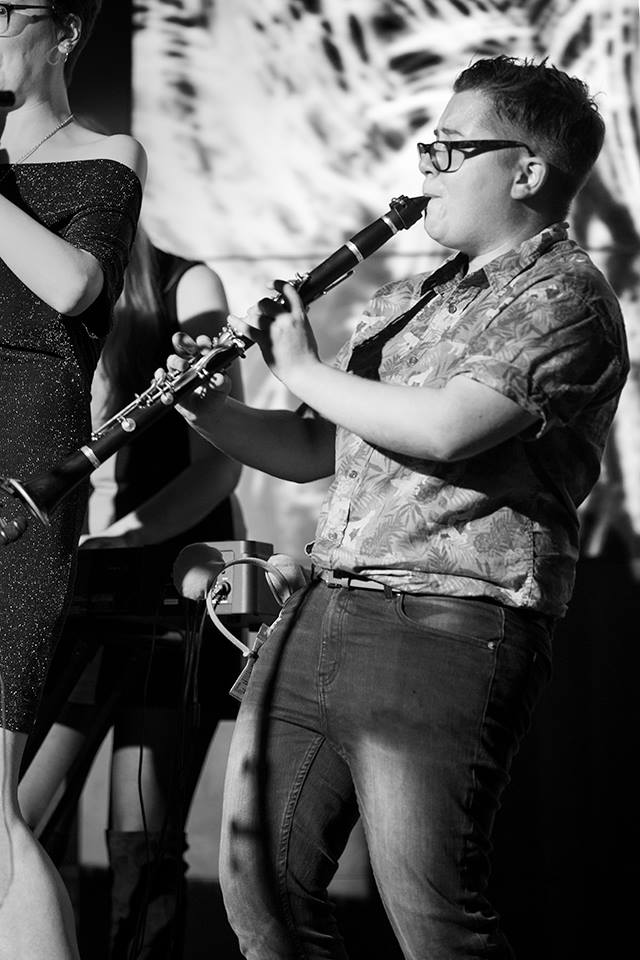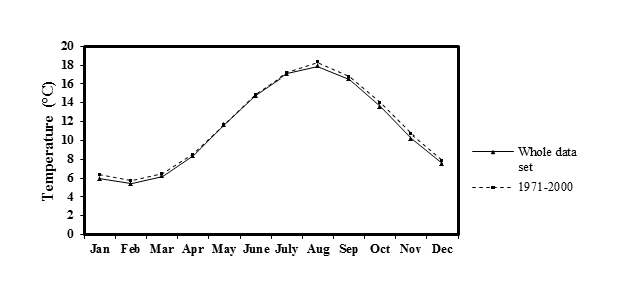PhD Portfolio

Data Sonification in Creative Practice
Abstract
Sonification is the process of data transmission with non-speech audio.
While finding increasing acceptance as a scientific method, particularly
where a visual representation of data is inadequate, it is still often
derided as a ‘gimmick’. Composers have also shown growing interest in
sonification as a compositional method. Both in science and in music,
the criticism towards this method relates to poor aesthetics and
gratuitous applications. This thesis aims to address these issues
through an accompanying portfolio of pieces which use sonification as a
compositional tool. It establishes the principles of ‘musification’,
which can be defined as a sonification which uses musical structures; a
sonification organised by musical principles. The portfolio explores a
number of data sources, musical genres and science-music collaborations.
for fixed media – 8’
Blyth-Eastbourne-Wembury is a
stereo fixed-media piece composed as a commission for the National Union
of Students (NUS) and to be played at the Eden Project in Cornwall as
part of the launch of the SOS (Students Organizing Sustainability)
Network. The organisation was seeking artists who engaged with issues
relating to climate change and sustainability as well as encouraging
their audiences to engage in these topics. For this particular
performance of the piece on 9 November 2015, two speakers were placed in
a bamboo hut in the jungle biome of the Eden Project.
The piece
combines the sonification of data describing rising sea temperatures
measured on the British shores with a coastal soundscape. The rising
temperatures and salinity measured at Eastbourne and the English Channel
since 1892 are mapped to sine waves. The resulting dissonances create a
sense of alarm and danger, while the cyclical nature of the data
reflects the waves heard throughout the piece. The soundscape through
the work progresses from a coastal soundscape free of human interference
to one full of human intervention. The recordings took place at Wembury
beach and Sutton Harbour in Plymouth.


Sonification of Dark Matter (2016)
Audio-visual sonification – 18’
Sonification of Dark Matter was developed in collaboration
with Dr Ralf Kähler from the Kavli Institute for Particle Astrophysics
and Cosmology at Stanford University. The data of dark matter
simulations should be made audible. The team at Stanford had already
created some visualisations of the simulations and the sonification
should accompany and enhance these otherwise silent videos. The audio
and sound are therefore created from the same datasets!
The sonification of the dark matter simulations should accompany the
visualisation but also support the understanding of dark matter. The
listener’s cognitive experience is expanded by the sonic element, which
hopefully also expands their cognitive bandwidth to comprehend such
large and complex data.
Three dark matter phenomena were sonified: a dark matter halo, dark
matter streams and a dark universe. Interesting data parameters were
mapped to a number of musical parameters used to synthesise sounds and
transform recorded sounds. The most effective sound mappings were
retained and combined with a particular focus on musical quality and
listener experience. The audio-visual installation was presented at
Plymouth University’s Immersive Vision Theatre on 26-28 February 2016.
Sonification of Dark Matter received considerable media attention in the Observer, Independent, Nature Physics and Physics World.
The Observer– If you could listen in to dark matter, just what would it sound like?
Independent– Dark matter: Invisible material to be represented through medium of song
Nature Physics – Music: The music of particle collisions
The Voice of the Sea (2017)
live electronics – ca. 10’
The Voice of the Sea real-time data collected by a marine buoy
located at Looe (South-East Cornwall). The data received determine the
compositional choices as the piece is performed, so every performance is
different. We first hear a direct mapping of the altitude of the buoy
to a specified frequency range. As the system receives more data, it
will determine whether the sea is calm and stormy and begin changing the
piece accordingly to reflect the state of the sea. During a
performance, the listeners are surrounded by speakers; they become
immersed in an augmented real-time marine soundscape.
The Voice of the Sea combines synthesised sounds and recorded
sounds from the coast of Looe. It is a piece of live electronics, as the
composer or other performer makes some compositional choices in
reaction to the data received. Additionally, the audience can see a
projection showing the number values of the incoming data and a live
webcam of Looe’s coast.
The project was developed in collaboration with the Marine Institute
and the Channel Coastal Observatory who supplied access to the real-time
buoy data. The sound file was recorded in 21 February 2017 for BBC3’s Music Matters programme aired on 27 February 2017 (from 38’). The Voice of the Sea has also been featured in Clot Magazine.
Welcome to our website
This is sample content, you can replace it with your own text and images.
Ut enim ad minim veniam, quis nostrud exercitation ullamco laboris nisi ut aliquip ex ea commodo consequat. Duis aute irure dolor in reprehenderit in voluptate velit esse cillum dolore eu fugiat nulla pariatur. Ut enim ad minim veniam, quis nostrud exercitation ullamco laboris nisi ut aliquip ex ea commodo consequat. Duis aute irure dolor in reprehenderit in voluptate velit esse cillum dolore eu fugiat nulla pariatur
Ut enim ad minim veniam, quis nostrud exercitation ullamco laboris nisi ut aliquip ex ea commodo consequat. Duis aute irure dolor in reprehenderit in voluptate velit esse cillum dolore eu fugiat nulla pariatur. Ut enim ad minim veniam, quis nostrud exercitation ullamco laboris nisi ut aliquip ex ea commodo consequat. Duis aute irure dolor in reprehenderit in voluptate velit esse cillum dolore eu fugiat nulla pariatur